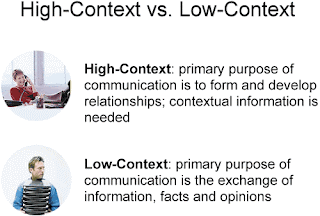Introduction
Based on the assignment brief, we were required to pick an advertisement we are most dissatisfied with and write a sound rationale as the reasons why we do not approve the ad, in relation to culture and society. Then, we have to re-advertise the product/brand and explore of all ways possible to produce the ad.
Description of The Unsatisfactory Ad
The ad that we have chosen is entitled ‘The Pepsi with Chinese Monks’.
This ad is about a young boy who is brought to a Buddhist monastery. There he is taught the ways of Kung Fu and learns how to be a monk from an old Buddhist Shaolin Monk master. The final scene shows him doing his final test in order to become a monk. His final task is to figure out what the symbol on all of the monks' heads meant. As he looks down at the Pepsi he just drank, he realizes that crushing the can with his head would give him the same symbol. (Ortwin.O, 2010, online)
Its Purpose
The ad’s purpose is to let the audiences know that by drinking Pepsi , you will gain more strength to accomplish your task. (Phungvuchaulong, 2011, online)
Its Relation to the culture and society it was made for
In the unsatisfactory ad, they showed a few things related to Chinese culture such as, the Shao Lin Temple, Kung Fu, and the traditional music. The Shao Lin Temple which is a monastery which is best known to the Western world. That's the reason why their used a foreigner from western country as the main character.(Ortwin.O, 2010, online)
The Need For Change
The message of this Pepsi ad is effective to some and to others maybe not so much. It needs to depend on the person and how they are feeling at that moment of viewing. When someone is not thirsty, they wouldn't have the urge to drink Pepsi because the humour in the ad doesn't blend in well with the actions. That is why this ad is not effective enough.
The point of drinking Pepsi will make audiences feel stronger is not believable because in the ad it only shows them drinking Pepsi after the monk breaks the brick. Parody and fantasy is different because the audience doesn't expect reality. (Alane.B, 2010, online) People may not understand that the symbol on the monks' heads is the Pepsi can's print because all soft drink cans look almost the same.
For example:
 |
| Screen shot from ''Pepsi with the Chinese Monk'' ads |
Difference and Effectiveness of Our Idea in Relation to Culture and Consumerism
We used facial expressions to convey the message to the audiences. According to PhysOrg.com, people from Asia and European countries have different understanding on facial expressions. However, Malaysians are widely expose to both western and Asian culture. Therefore, we understand most of the facial expressions. (Kashmira Lad, 2012, online) Whereas, in the unsatisfactory ad, they used the mark of the ring on the Pepsi can drink to attempt to convey the message to the audience instead of using facial expressions. The mark of the can drink is no difference from any normal soft drinks.
Short Rationale of Our Work
We re-advertise the Pepsi brand through billboards instead of TV commercials because it’s placed along highways, therefore people will notice the ad everyday if they travel the same route repeatedly. Whereas during heavy traffic, audiences will tend to look at the ad. (Tanya.R, 2012, online)
They will also most likely to remember the ad more and there is no option to turn off the ad. Unlike TV commercial, audiences might switch channels before the ad finish airing. (Lynda M.B, 2012, online)
Based on Pepsi’s theme in 2007, “The taste that’s once forever young”, we've decided to use this theme because who wouldn’t want to be forever young and enjoy life? Based on Lexiophiles, the Generation Y or the Peter Pan Generation is a large group of 25-40 years old young adults who are mostly the children of the Generation X. The Peter Pan generation got its name after a famous character from the novel of J. M. Barrie due to Peter Pan's mentality which describes this generation perfectly. This group of people don’t want to face any responsibility and delayed the start of their adulthood. They don’t like seeing themselves as adults because they don’t see anything good in being one. (Eva, 2012,online)
In our final work, we make a series of billboard ads, showing people of 3 different age group posing with pouty lips and the lips with the colour of red and blue. The reason why we use people of all ages is to show that everyone is young at heart and we all have an inner child within us. Besides, Pepsi's logo looks like the shape of a lips.
 |
| Spydaman13, 2012. Cross 1.6 Read between the lines [electronic print] Available at: <http://12160.info/profiles/blogs/illuminati-sun-symbolism-world-s-100-best-brand-logos> [Accessed 5th December 2012] |
 |
| Elena.Z, 2010. Jessica Biel [electronic print] Available at: <http://www.jurgita.lt/images/id/125503> [Accessed 2nd December 2012] |
References
Phys.org (2009) Facial expressions show language barriers too. [online] Available at: <http://phys.org/news169385578.html> [Accessed: 1st Dec 2012].
Lad, K. (2012) Culture of Malaysia. [online] Available at: <http://www.buzzle.com/articles/culture-of-malaysia.html >[Accessed: 1st Dec 2012].
Ortwin Oberhauser (2010) The Pepsi Shaolin Monk boy Commercial Video. [online] Available at: <http://www.ortwin-oberhauser.com/the-pepsi-shaolin-monk-boy-commercial-video/> [Accessed: 29th October 2012].
ct09e24 (2007) Entry2_Phungvuchaulong. [online] Available at: <http://ct09e24.wordpress.com/2011/10/10/entry2_phungvuchaulong/> [Accessed: 31st October 2012].
Alanbane.blogpsot, 2010. The Critical Mind - The Pepsi Monk.[online] Available at: <http://alanbane.blogspot.com/2010/05/critical-mind-pepsi-monk.html> [Accessed 31st October 2012]
Lexiophiles (2012) Do you want to be forever young? – Welcome to Neverland!. [online] Available at: <http://www.lexiophiles.com/english/do-you-want-to-be-forever-young-welcome-to-neverland> [Accessed: 31st October 2012].
eHow (2011) The Advantages & Disadvantages of Billboard Advertising. [online] Available at: <http://www.ehow.com/info_8211770_advantages-disadvantages-billboard-advertising.html> [Accessed: 7th November 2012].
Small Business - Chron.com (1999) The Advantages & Disadvantages of Billboards As an Advertisement Tool. [online] Available at: <http://smallbusiness.chron.com/advantages-disadvantages-billboards-advertisement-tool-16143.html >[Accessed: 7th November 2012].











































.JPG)
.JPG)













.JPG)